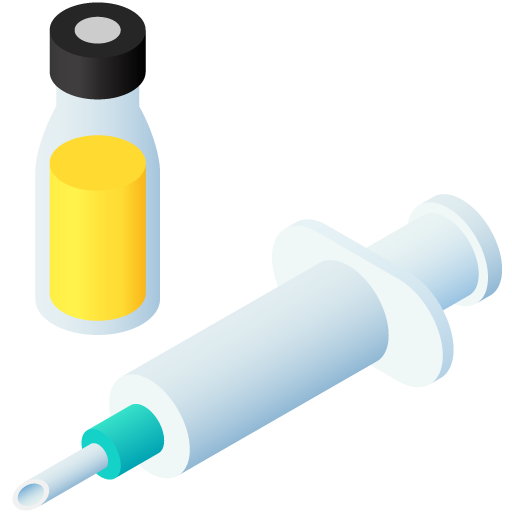Combination therapy
No results were found for your selected species
Vitamin B1
Active substance
ATC code
Species
Cattle and Sheep
Indications
For the treatment of cerebrocortical necrosis in cattle and sheep and as an adjunct in metabolic disorders of cattle.
Dose to be administered and administration route
By intramuscular or slow intravenous injections
Dosage: 2.5 - 5ml per 50 kg bodyweight. Repeat every 3 hours for up to a total of 5 doses.
Adverse reactions
Adverse effects are not anticipated following administration of thiamine.
Dispensing
POM-V - Prescription Only Medicine – VeterinarianSUMMARY OF PRODUCT CHARACTERISTICS
1. NAME OF VETERINARY MEDICINAL PRODUCT
Vitamin B1 10% w/v Solution for Injection
2. QUALITATIVE AND QUANTITATIVE COMPOSITION
Each ml contains:
|
Active Substance(s) |
%w/v |
|
Thiamine Hydrochloride Excipient(s) |
10.0 |
|
Benzyl Alcohol (as preservative) |
1.5 |
For a full list of excipients, see section 6.1.
3. PHARMACEUTICAL FORM
Solution for injection.
A clear, colourless to greenish-yellow liquid.
4. CLINICAL PARTICULARS
4.1 Target Species
Cattle and Sheep
4.2 Indications for use, specifying the target species
For the treatment of cerebrocortical necrosis in cattle and sheep and as an adjunct in metabolic disorders of cattle.
4.3 Contraindications
Do not use in cases of known hypersensitivity to the active ingredient.
4.4 Special warnings for each target species
Not applicable.
4.5 Special precautions for use
i. Special precautions for use in animals
Intravenous injections should be given slowly. Observe aseptic techniques
ii. Special precautions to be taken by the person administering the veterinary product to animals.
Care should be taken to avoid accidental self-injection. In the event of accidental self-injection, consult medical advice immediately and show the doctor this label. Wash hands after use.
4.6 Adverse reactions (frequency and seriousness)
Adverse effects are not anticipated following administration of thiamine.
4.7 Use during pregnancy, lactation and lay
It is not anticipated that the use of Vitamin B1 Injection will lead to any undesirable effects during Pregnancy and/or Lactation.
4.8 Interaction with other medicinal products and other forms of interactions
None Known.
4.9 Amounts to be administered and administration route
By intramuscular or slow intravenous injections
Dosage: 2.5 - 5ml per 50 kg bodyweight. Repeat every 3 hours for up to a total of 5 doses.
4.10 Overdose (symptoms, emergency procedures, antidotes), if necessary
Thiamine is very soluble in water and excess is excreted in the urine as a pyrimidine or as unchanged material. Tolerance studies have been carried out at twice the maximum recommended dose and the product was well tolerated.
4.11 Withdrawal Period(s)
Meat-Zero days
Milk-Zero hours
5. PHARMACOLOGICAL PROPERTIES
Pharmacotherapeutic group:
Vitamins, Vitamin B1, plain and in combination with vitamins B6 and B12, Vitamin B1, plain.
ATCvet code: QA11DAO1
Vitamin B1, also known as thiamine and as aneurine, is a water soluble vitamin. Aneurine is converted in the body to aneurine pyrophosphate (cocarboxylate) which acts as a coenzyme for several decarboxylating enzyme systems, the most important of which is decarboxylase. The enzyme is necessary for the decarboxylation of pyruvic acid, an intermediate stage in carbohydrate build-up or breakdown. When carbohydrates are a major source of energy the body requirements of aneurine increase. Deficiencies affect the nervous and gastrointestinal systems and skin.
Tissues dependent on glucose or lactate-pyruvate for energy such as the brain and heart are particularly compromised in thiamine deficiency. Thiamine deficiency may be primary, due to deficiency in the diet, or secondary, because of destruction of the vitamin in the diet by thiaminase. The principal cause of thiamine deficiency is the presence of thiamine-destroying agents which are widely distributed in nature, and produced by rumen microflora. Growing sheep are particularly susceptible, and outbreaks of cerebrocortical necrosis have been associated with sulphur in the diet.
6. PHARMACEUTICAL PARTICULARS
6.1 List of excipients
Benzyl Alcohol
Sodium Hydroxide
Disodium Edetate
Water for Injections
6.2 Incompatibilities
None known.
6.3 Shelf Life
Shelf-life of the veterinary medicinal product as packaged for sale: 3 years
Shelf-life after first opening the immediate packaging: 28 days
6.4 Special precautions for storage
Do not store above 250C.
Protect from light.
Once broached, use vial within 28 days. Discard unused material.
6.5 Nature and composition of immediate packaging
50 ml amber type II glass vial with a red bromobutyl rubber bung and plain aluminium cap.
6.6 Special precautions for the disposal of unused veterinary medicinal product or waste materials derived from the use of such products
Any unused product or waste material should be disposed of in accordance with national requirements.
7. MARKETING AUTHORISATION HOLDER
Bimeda Animal Health Limited
2 / 3 / 4 Airton Close
Tallaght
Dublin 24
Ireland
8. MARKETING AUTHORISATION NUMBER
Vm 50146/4029
9. DATE OF FIRST AUTHORISATION
27 May 1993
10. DATE OF REVISION OF THE TEXT
October 2018
Approved: 25 October 2018

 TRUSTED SOURCE
TRUSTED SOURCE









